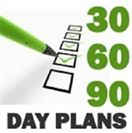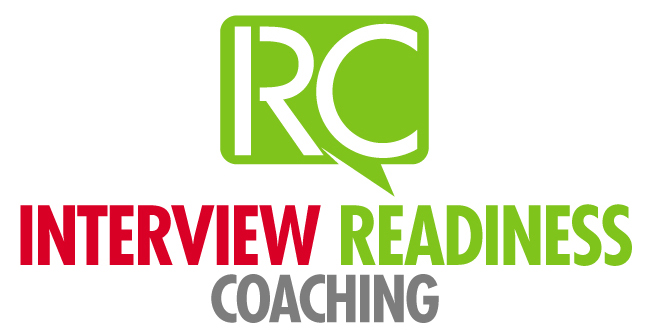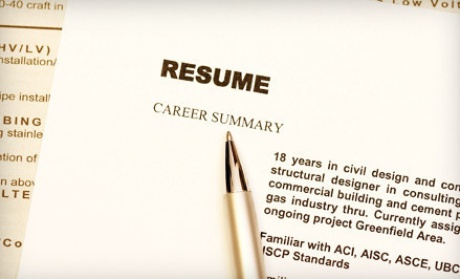- Introduction: An overview of what you would like to accomplish the first 90 days in the job.
- First 30 days: During the first 30 days in the position, time is spent in training, meeting team members, learning the organization’s systems and its products and services, reviewing procedures and assigned accounts.
- First 60 days: The next 30 days is spent studying best practices in the industry, setting goals for the next 30 days, meeting with the supervisor to gather feedback, building relationships with your colleagues, identifying potential mentors, reviewing the efficiency of company processes and procedures, visiting other departments and continuing to attend training.
- First 90 days: The final 30 days will be spent obtaining feedback on new processes and procedures, implementing new strategies and procedures, and addressing the three strategic initiatives.
• Overview Approach is more of a summary of your background. The Overview is also used to keep you out of trouble when you are not certain of what the interviewer wants to hear.
- A table of contents
- A copy of your resume (which you should bring to the interview as a standard practice)
- A break down of experience pertaining to the position
- Education degrees/certifications or transcripts (if any)
- Accomplishments or awards (professional and/or academic)
- Samples of your work (professional or academic)
- A 30/60/90 day work plan.
Help Wanted Ad, PA newspaper, 1994
- consistent work history that is related to your employment goal
- recent employer was very prestigious and you want to showcase their name to impress
- continuously increased your level of responsibility through the jobs you worked ie., you began as a accounting clerk, then became staff accountant, then accounting manager
- Focus on a selected area of accomplishment/experience
- Camouflage gaps in work history or helps downplay areas you do not want to emphasize
- Highlight experience gained from one or two employers you have been loyal to for many years
- If you are changing careers and want to present recent training/education more so than employment history
1. Get Active on LinkedIn
2. Get Active on Twitter
3. Write and get read
4. Speak and get heard
5. Get Referred
6. Online Resume
7. Recruit Internally
“Copyright [2007] Careerbuilder, LLC – Reprinted with permission.”
As if the résumé writing and panel interviews weren’t grueling enough, now you’ve got to negotiate a salary before you can successfully end your job hunt. “If you want something, you had better negotiate for it.” That’s the bottom line according to authors Robin L. Pinkley and Gregory B. Northcraft in their book “Get Paid What You’re Worth.” They note, “Employers routinely will offer you less than they ultimately expect to compensate you with the expectation that you will negotiate.”
To help you nail the big bucks, heed these dos and don’ts.
Do arm yourself with as much information as possible by checking out industry Web sites for your occupational and geographic areas and others that specialize in salary information or the U.S. Bureau of Labor Statistics.
Don’t overlook information from consulting firms. Mike Nichols, vice president of compensation, benefits and HRIS for Cendant Corporation, places the most confidence in surveys conducted by major consulting firms. “I frequently seek out surveys from Mercer, Hewitt, Towers Perrin and Watson Wyatt,” Nichols says. While most of the survey data from these firms is cost-prohibitive for an individual, there are a lot of good articles and information available from their web sites to help you understand how companies view and determine compensation levels.
Do withhold salary information for as long as possible. “Salary information is often used by employers as a screening tool. You want to keep all salary information away from a potential employer for as long as possible so that you’re not “screened out” before you even get your foot in the door,” suggests Denise Cooper, vice president of human resources for Peoples Energy in Chicago.
Don’t feel pressured to divulge a specific figure on an employment application. Instead, write “open,” “negotiable” or “competitive” on every application form you complete.
Do delay the salary negotiation process for as long as possible. Each minute spent with your prospective employer is another minute you can use to explore the job and the types of responsibilities it entails. This will allow you more time to focus on your strengths and accomplishments as they relate to the job and demonstrate your value.
Don’t be shy about outlining the skills and experience you will bring to your employer and how they will help the organization meet its goals or solve a problem. If there’s ever a time to toot your own horn, the time is now. Know what the value of your skills, experience and achievements are worth in the current marketplace.
Do let the prospective employer make the first move into the salary negotiation phase. Knowing what the salary range is for the job will give you an idea of the interviewer’s negotiating parameters and will help you gauge how much selling you may have to do.
Don’t give the employer an actual figure if you are asked directly about the salary you want. Instead, turn the question around and ask what salary range would be offered in the company for this type of job for someone with similar years of experience, level of expertise and knowledge of the business.
Do be honest about your current salary. Falsely inflating your pay or padding numbers is dishonest and can come back to haunt you when your new employer verifies your past employment . . . and salary.
Don’t act too eager to accept, even if the offer was more than you expected. Most employers have some room to negotiate and you should strongly consider making a counter offer. Pinkly and Northcraft found of the companies they interviewed, “Eighty percent told us that the job applicant who negotiates in a professional manner would make the best impression. Only 20 percent said they would be most impressed by the applicant who accepted the offer as made.”
Do be professional in your negotiations. Keep the salary discussion positive and upbeat by focusing on why you should be paid what you desire and the value the employer will receive in return.
Don’t let your current salary limit your viewpoint of what you’re earning potential might be. If your research shows that the industry is paying more than your were being paid, hold out for this higher amount and remind the interviewer of your qualifications and experience.
Do be realistic in your expectations. Some candidates have inflated opinions of what they should be earning. Consider the industry, the economy, your experience and the competition from other potential candidates.
Don’t let the employer rush you into accepting a salary that you know you’ll be unhappy with soon after you take the job. Let them know that the salary offer is less than what you desire by saying something like, “Taking my experience into consideration and knowing that I have the ability to jump right in and make a difference, I really feel strongly that a salary of $55,000 would be appropriate.”
Do aim high. Keep in mind that you can always lower your desired salary expectations, but it’s impossible to inflate it once you indicate what would be acceptable to you.
Last Updated: 24/09/2007 – 3:50 PM
- Lead you through a self-assessment series so you will have extensive knowledge about marketing your most important brand… YOU!
- Teach you about various résumé formats and the advantages and disadvantages of each.
- Assist you with writing a “Summary of Qualifications” that shows potential employers that you have direction.
- Teach you what to present on your résumé, and what to keep to yourself.
- Teach you how to overcome gaps in work history and age discrimination.
- Show you how to use online resumes and Internet Resume Secrets.
- 45% of employers check social networks before hiring
- 11% plan to use social networking sites for screening in the near future
- 35% of companies had rejected a candidate based on information from a social-network profile
- 14% rejected a candidate for using an emoticon (smiley face, sad face etc)
- 50% chose a candidate because the profile communicated a “good fit” and personality
- 39% based on professional qualifications
- 39% based on the creativity of the candidate
SERVICES INCLUDE:
- Start-up Strong —Business Coaching
- Flex Coaching
- Business Growth Coaching
- Business Building Concierge
- The ExecutiveGPS
Conference
VentureReady
Speak to a Career coach today: Schedule online
(888) 712 4956
info@ventureready.net
Brand Mission
Our mission is to never see another entrepreneur fail. Entrepreneurship is the beautiful, challenging journey of bringing your true self into the world in a way that serves others while also serving your life goals.








